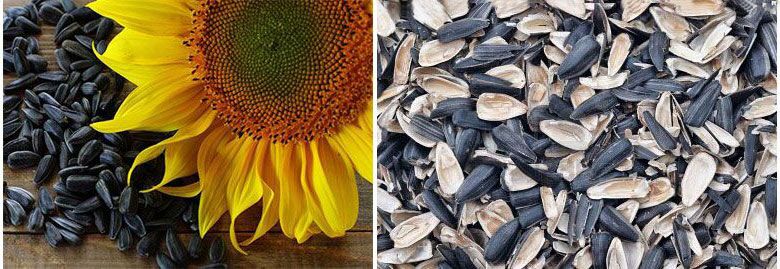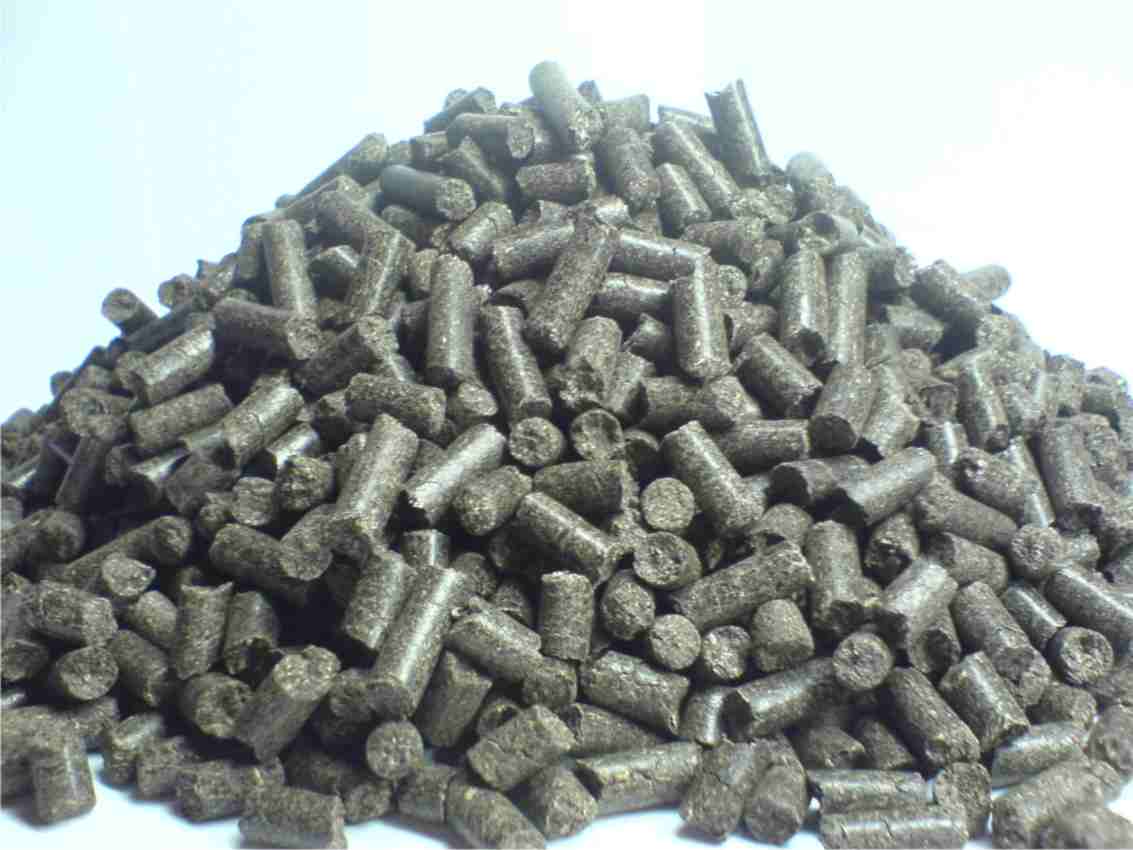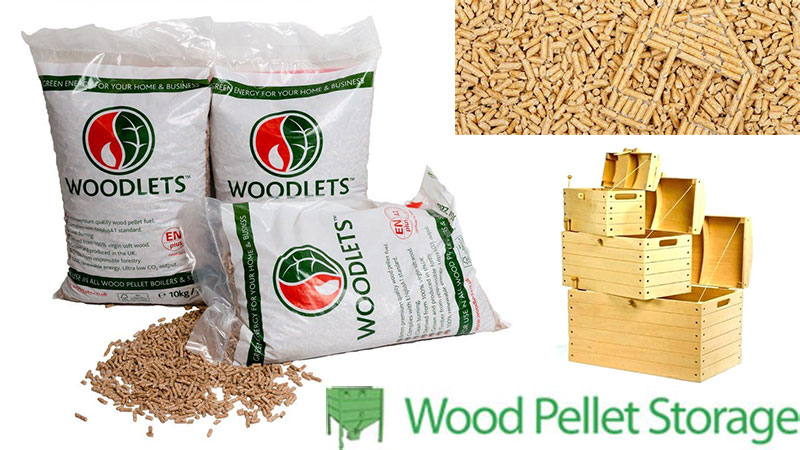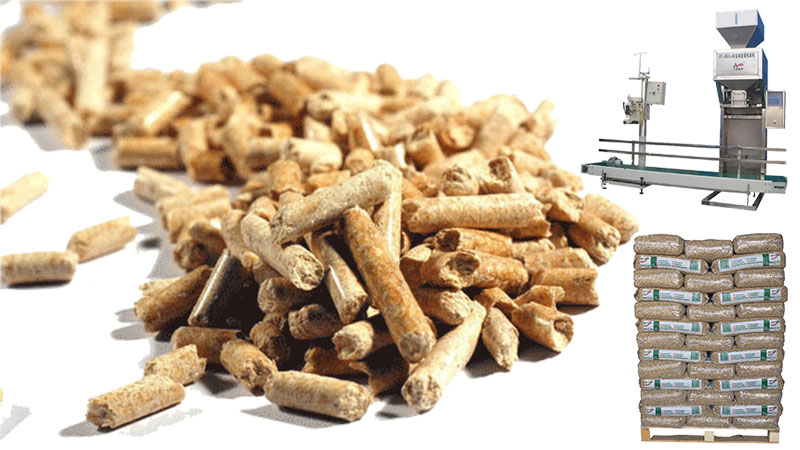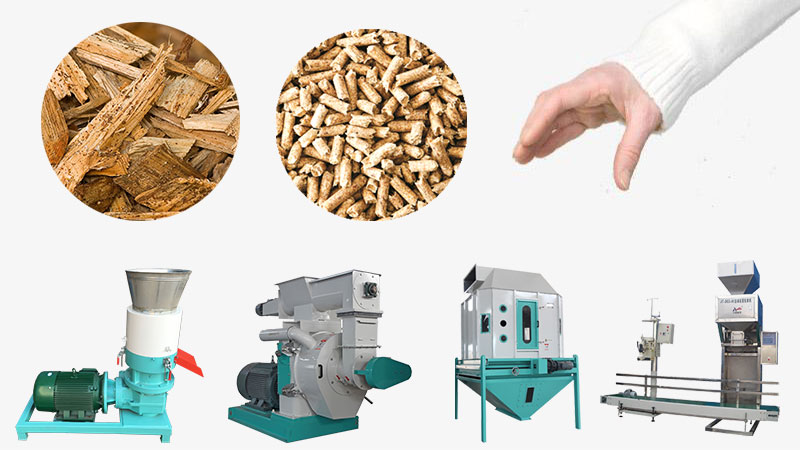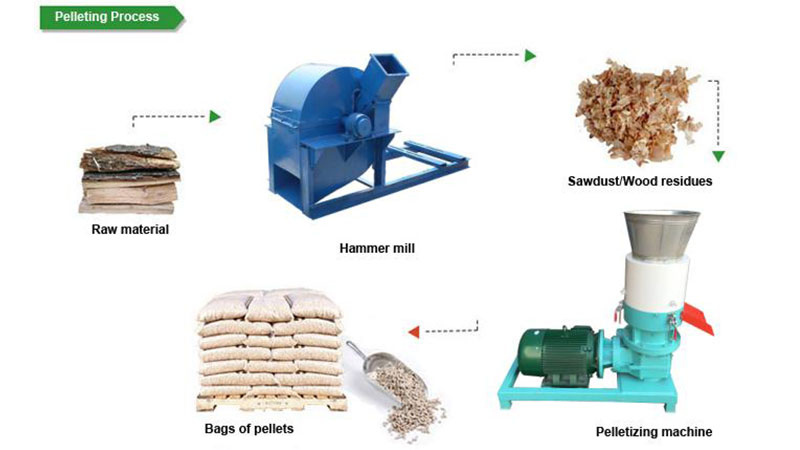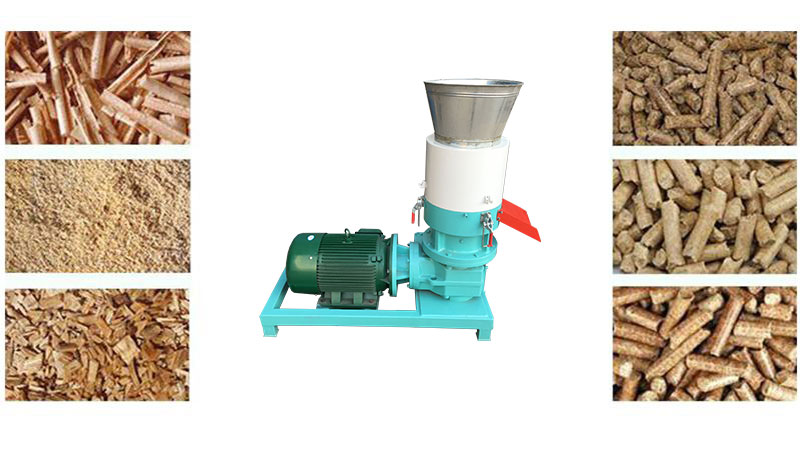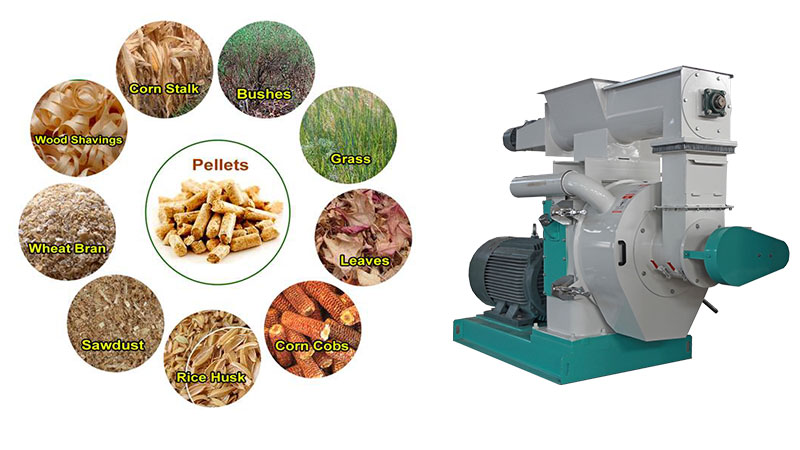 |
Solution for Making Wood Pellets from Sunflower Husk |
1.Introduction
2. Geographical distribution
3. Fuel value of sunflower husk
4. Sunflower husk pellets
5. Sunflower husk pelleting
6. Potential market for sunflower husk pellets
1.Introduction
Sunflower husks are the by-product of the dehulling of sunflower seeds. A well-managed dehulling process yields kernels with 18-22% hulls remaining. 100kg of seeds having 25% of hulls yield 16.5kg of hulls.
Sunflower husks are burned as fuel to power oil mills, but only half of the hulls can be used on-site for energy production. The remaining half have to be transported off-site to provide energy or for other purposes, such as composting, bedding material, or as a low-quality roughage for livestock. However, they are light in weight and bulk because of their low density, and are therefore costly and impractical to transport. For sunflower seed oil manufacturer or sunflower seed processors, how to deal with useless husk has become an annoying problem.
The newly developed sunflower husk pellet machine will help you process husk to bio-fuel pellets, which can not only get rid of high priced coal or petroleum, but also make a profit from them. Some sunflower husk pellet mills compress the hulls into pellets, resulting in a denser product (250 kg/m3 vs 70-100 kg/m3) that is easier and less expensive to transport. Thereby, many industrial enterprises and individuals are trying this product and using it effectively.
2. Geographical distribution
Sunflowers, as a kind of oil-bearing crop, occupy over 2% of the world’s cropland on a large scale. Sunflower prefers temperate latitudes and they are grew in southeastern Europe, the European part of Russia, South America and other temperate regions.
Throughout South America, in addition to wheat belt and soybean belt, sunflower belt is also one of major crop belts. Although sunflowers are cultivated in many parts of the world, South America has the only sunflower belt. In fact, sunflowers are the third-ranking crop in southern South America up to 12.3% of all the cropland. In Southern Europe, the amount of sunflower crop reaches 5.9% as the fourth crop. In Southern Africa, the proportion of sunflower crop amounts to 6.3% as the third crop. In European Russia, the amount of sunflower crop is 6.0% as the fourth crop. Also, China is the fourth largest sunflower-producing country in the world.
3. Fuel value of sunflower husk
Oil and coal are commonly used for heating. However, increasing costs and environmental concerns related to fossil fuels have led to an increased demand for alternative heating fuels. Substantial amounts of agricultural biomass having a relatively low lignin content have been provided. The following table shows the reported properties of sunflower husk as biomass fuel over a variety of agricultural biomass fuels.
|
Property
|
Sunflower hulls
|
Wheat middlings
|
Soybean hulls
|
Corn shells
|
|
Moisture(%)
|
8.65
|
12.58
|
11.38
|
13.43
|
|
BTU/Ib
|
8474
|
7228
|
6660
|
6924
|
|
Ash(%)
|
2.86
|
5.18
|
4.17
|
1.13
|
|
Sulfur(%)
|
0.14
|
0.15
|
0.07
|
0.11
|
As we all know, a low ash content is required for a heating fuel. Ash produced by burning fuel may result in fouling of equipment and air pollution. Typically, an ash content of no more than about 3% is desirable. Given the above analysis, sunflower hulls cause a relatively low ash content of 2.86% during heating process. Besides, the heating value of at least about 6800 BTU/lb is preferable for combustion. Sunflower hulls possess the highest heating value of 8474 BTU/lb among the four biomass fuels.
Other properties, such as sulfur and moisture content also have remarkable effects on pellet fuel performance. High moisture content in a fuel may reduce efficiency. The amount of moisture content of sunflower hulls is the lowest up to 8.65% compared with other agricultural crops. Likewise, high sulfur contents can lead to pollution in the course of combustion. Sulfur content of 0.14% with regard to sunflower hulls is suitable during heating process. All in all, sunflower husk is a promising alternative biofuel.
4. Sunflower husk pellets
Sunflower husks are a by-product of sunflower oil extraction process and can be found in large quantities in sunflower oil factories. Large amounts of sunflower husks are produced in South Russia and in Ukraine. With a high calorific value, sunflower seed husks can also be formed into pellets for use as a biomass fuel. As a biofuel, sunflower husk pellets have been successfully used in UK power plants and also in Poland.
Sunflower husk pellets are biofuel produced from sunflower husks. They are compressed cylindrical pellets, whose average length is from 10 to 30mm and diameter is from 6 to 10mm, giving a density of 1.2kg per thousand cubic meters at 8% moisture. Then what are the advantages of sunflower husk pellets as biomass fuel?
Advantages:
● High calorific value: calorific value of pellets is 4.3-4.5 kW/kg. This figure is comparable with coal and 1.6 times higher than that of wood. During the combustion of 1000kg of pellets made from the husk, the amount of heat energy released is same as while burning 685 liters of fuel oil/500 liters of diesel fuel/479 m3 of natural gas, or 1,600kg of timber.
● High durability: the durability index of sunflower husk pellets is 18, which means they are harder than olive cake. Sunflower husk pellets are manufactured for high uniformity of fuel and better transportability.
● Economical: the cost is relatively low, compared to coal, fuel oil, and gas. With relatively low cost, sunflower husk pellets can be effectively used as a solid fuel.
● Environmentally friendly: the sunflower pellets are environmentally friendly fuel. When it is burnt, the amount of CO2 released is the same as during the natural decomposition of biomass, which is used to produce it. So CO2 emission is zero emission. Unlike traditional energy, carcinogenic or other dangerous substances are released either during storage or during combustion.
Given these characteristics, sunflower husk pellets prove to have great use for furnace heating systems in industrial applications. All of these advantages make sunflower husk pellets ideal biofuel options.

When sunflower husk pellet mill works, sunflower husk prepared will be pressed under great force and high temperature to form columned granule. Pellets getting out of this machine are of slippery skin and good intensity, which can be stored or transported easily. That is to say, with minimum cost you can turn waste to wealth easily. Next, we will present the process of sunflower husk manufacturing in detail.
*Crushing: sunflower husk needs to be crushed before pelletizing. The average length of sunflower husk is about 8.40mm, which is not available for pelletizing. The hammer mill can crush sunflower husk through the collision between the high-speed hammer and materials. Then, the output size can reach the diameter of 3-5mm.
Notice: Generally speaking, sunflower husk is quite dry with moisture content of around 8.65%, which meet the condition of 8-10% moisture in biomass pellet making. So there is no dry processing in the production line.
*Mixing: to ensure the best quality of sunflower husk pellets as biomass fuel, the dried sunflower husk can be mixed with certain sawdust, which makes sunflower husk pellets easier formed.
*Pelleting: when the pellet mill works, sunflower husks will be pressed under great force and high temperature of 140 – 1800F utilizing a ring die flat mill or flat die pellet mill to form columned granule with an average length from 10 – 30mm, and a diameter from 6 to 10mm.
*Cooling: after the pelletizing process, the temperature of sunflower pellets is about 60-80 degree Celsius and the moisture content is about 15%. A cooler must be used to reduce the moisture content of sunflower husk pellets to about 3-4%, thereby making it easy to store.
*Screening: cooled pellets are then screened to remove any remaining powdery material. Also, removed powdery materials can be reused for pelleting.
*Packaging: after the screening process, sunflower husk pellets will not directly enter into the fuel process. To avoid sunflower pellets affected with damp, the packing process in an automatic packing system is very necessary.
Part of sunflower husk pellets obtained can be burned in the industrial fuel boiler – to provide the production flow with the requisite steam. Sunflower husk pellets can also be used for heating. It is used most often in the boiler rooms of small and large power plants and in combined heat and power plants.
6. Potential market for sunflower husk pellets
Along with the increase of the world demand for alternative biomass energy, it has been revealed that the domestic market for sunflower husk pellets features a positive dynamic in development in Ukrainian, an agricultural country. It has been reported that within the 2nd half of 2011 and the 1st half of 2012 there appeared 24 new producers and 54 new suppliers of sunflower husk pellets on the Ukrainian market by specialists from the marketing department of Ukrainian biofuel portal.
It’s rather explainable that sunflower husk pellets are getting more and more popular both in Ukraine and all over the world. In terms of the economical factor, sunflower husk pellets are cheaper than wood ones. Moreover they could be used even more effectively instead of gas and coal which pollute the environment and get more and more expensive. As for the environmental respect, sunflower husk pellets very rarely contain sand and other heavy dirt, which prematurely put fuel equipment out of action. This is a sustainable and hypoallergic energy resource that doesn’t include dust and spores from plants. Ash content of such pellets is very low, and thanks for their good packed compactness they could be stored and delivered through considerable distances without whatever troubles and additional expenses.
On top of that, the sunflower husk is a rather rare raw material for the European countries, that’s why demand for such pellets always prevails over supply. Such fuel is mainly used at the foreign industrial companies as an alternative source of energy. For today the biggest volumes of sunflower husk pellets are exported to Poland, and the market share in other countries increases as well. For instance, demand for Ukrainian pellets grows in Moldova and large volumes for sunflower husk pellets from Russian and Ukranian plants are available all year round. As to the transportation problem many husk biofuel producers are most seriously concerned about, full shipments are available from the Baltic and Black sea ports.
It does follow than business relations between husk biofuel producers, suppliers and customers are gradually establishing. Thanks to it both parties may establish useful business contacts and reach the most advantageous terms of collaboration.

